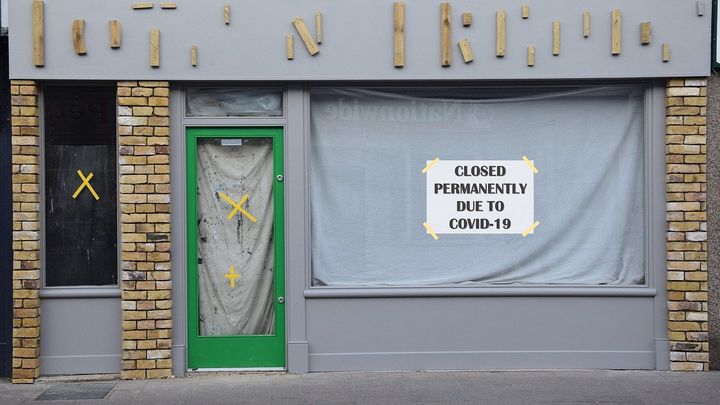“Corrections” are negative financial events that are usually associated with the stock market, but could a correct occur in 3D printing?
In eager stock markets, prices can continually rise — to a point. And then bad things happen, and sometimes quickly. While one might say that the stock market identifies the true value of companies, it really isn’t doing that. Instead it’s identifying the level of interest by investors that may or may not correspond to actual company values.
Over time in a “boom” period prices rise until the point where a sufficient proportion of investors have doubts, and suddenly the price that was propped up by that interest collapses, along with the stock prices. In extreme cases some companies disappear, either organically or bought up by stronger rivals who can suddenly afford to do so.
Sometimes these financially-shaking events are triggered by an external factor, like, say, a pandemic.
We’ve all heard stories of how this or that company has been struggling immensely during the pandemic, but there are also stories of companies finding themselves in unique positions where they have grown substantially during the pandemic. Video call provider Zoom would be but one example of this.
As the pandemic sweeps across the world, so too does it impact the 3D printing market. Could it be that some of the more familiar companies we’ve come to love over the years will suddenly be “corrected” out of existence?
3D Print Success In The Pandemic
This may be possible, but unlike the rest of industry, where the default is “down” and the minority of companies are “up”, I think the reverse scenario is the case in 3D printing.
That is to say, while a great proportion of 3D printing companies are doing reasonably well during the pandemic or even growing strongly, there are some that are not for one reason or another.
I’ve spoken to a number of 3D printing companies over the past months and generally they report strong sales, although often after a lull during the initial period of the pandemic when virtually everything was shut down.
One reason for the strong growth is the shift in priority for businesses who previously depended on highly efficient overseas supply chains. When those broke at the beginning of the pandemic, companies realized they were emphasizing financial efficiency too strongly and essentially forgot about flexibility.
To quickly introduce the needed flexibility, and indeed in some cases to just get going again, many companies turned to 3D printing options for the first time. They discovered that indeed today’s 3D printing technology could meet their needs, despite their out-model preconceptions of 3D printing being useful only for prototyping.
That effect has greatly assisted many 3D printer manufacturers around the world.
But perhaps not all.
3D Printer Companies Failing
Those companies that have yet to find new pandemic-generated niches may be having trouble. I don’t know specifically who they are, because they obviously would not tell us so. But they are likely there, somewhere.
They will continue so long as they can maintain financial stability, but in some cases, particularly startups that have yet to establish full distribution networks, they may run out of money at some point in the next six months to year.
It’s the market speaking: these companies are valued, but these other companies are less valued. It’s a ruthless world, and not much different in the competitive space of 3D printing.


I have to say that this looks like a lazy article of the form “these things happen, might it happen again, but to whom i know not?”
It seems like the last big correction in desktop 3d printing was in the 2015-2016 era, when the technology wasn’t really ready for larger market acceptance and the supply situation was still relatively expensive and numerous 3d printing startups fell flat.
In 2018 Printrbot collapsed, blaming chinese vendors for their failure but ignoring their inability to compete with Ultimaker, Lulzbot, and Prusa. My ignorant, arm-chair analysis is that Printrbot probably spent a lot of money on parts to supply sales that never materialized, during a period when the cost of those parts was falling precipitously, while both developing new technologies that may not have been really ready for acceptance and clinging suicidally to old technologies like their hotend design, perhaps bolstered by excess stock of parts, while the market mindshare drifted to other places.
They had a belt printer 2 years ago and didn’t bring it to market. Blackbelt brought one to market a year ago and now Creality is blowing up the 3d printing media with their cheaper version.
But printrbot also didn’t wow anybody with anything, near as i can tell, between 2014 and 2018. Not with somethihng they could buy. Not with something that included new and exciting advancements that weren’t developed specifically at printrbot.
Maybe Printrbot should have targeted the education market harder? It’s sad to say it but the funding situation in public education in the USA is ripe for exploitation by technology companies that can work the angles. New Matter and Polar certainly appear to have turned a profit without a compelling product in that market during that time frame – don’t confuse exiting a market with failing to pad the wallet. I don’t know what brand conned public libraries into buying their printers to offer 3d printing services with, but from the “what my friend paid the library $50 to print vs. what i crapped out in a few hours at home for free” posts seen on reddit their technology is weak as hell.
My guess is that the commercial rapid prototyping market has not slowed down at all due to coronavirus. These are highly technical people who don’t need to go to the office to produce value.
On the other side of the coin, the casual farting-around-at-home-because-it-makes-us-smile-if-it-sounds-dope 3d printing market has probably grown due to increased telecommuting in the middle to upper classes.